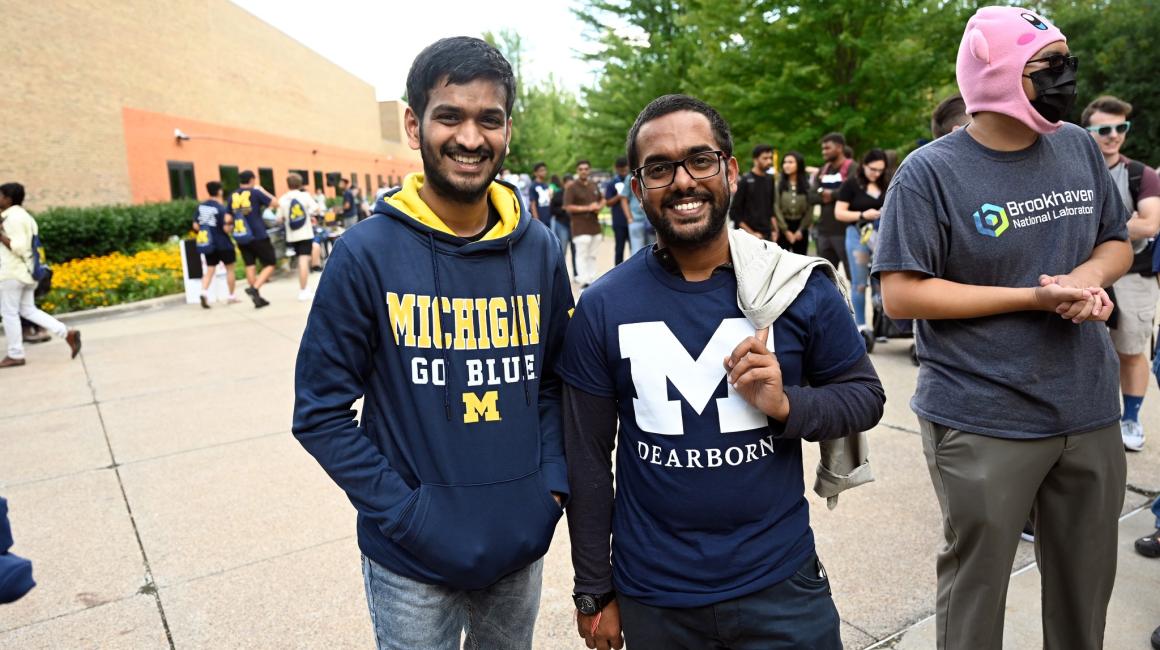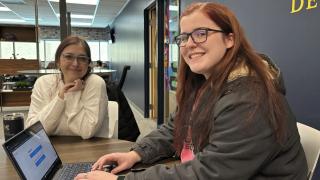
UM-Dearborn is the only fully commuter campus out of the 15 public universities in Michigan, and it’s long been discussed whether that unique status was a net pro or con. Recently, though, there’s been a lot of enthusiasm for seeing the commuter experience as a real asset. In the university’s strategic plan, it’s even featured as a core part of our identity. So what’s changed? When we asked Dean of Students Amy Finley, who’s been serving on a university working group charged with improving the commuter experience, she said the pandemic seems to have brought some fresh thinking to an old debate. Specifically, not having densely populated residence halls during a public health emergency proved to be a huge logistical advantage. And Finley says that seemed to get campus leaders thinking about what else might be positive about our version of the commuter experience.
There are plenty of reasons why the commuter format seems like it could be a plus for the university in today’s higher education environment. For starters, Finley says the cost of college has continued to climb. UM-Dearborn, of course, prides itself in being an engine of social mobility: Nearly half our students are first-generation college students, and just south of half are Pell-grant eligible, meaning they face substantial challenges paying for college. As such, there’s a large pool of students in the metro area who probably aren’t looking for a residential experience simply because they’re priced out of one. In contrast, the ability to live at home, study at a University of Michigan campus, and have lots of access to co-ops and internships within driving distance, simply offers more bang for their buck. Another trend Finley is noticing: Adult students who are already fully in the workforce but who are interested in flexible graduate programs featuring evening or hybrid options. This again is a type of student who’s not really interested in dorm life.
In fact, while we often characterize our students as commuters, it’s probably not the most descriptive term. Finley says often their most defining quality isn’t that they live somewhere else and drive to campus, it’s that they are “navigating multiple life responsibilities.” “They may be a traditional student, but may also be working 30 hours a week to contribute to their families’ or their own living expenses,” she says. “Many of our students are parents. Many live in multi-generational homes and may be caring for parents or grandparents.” This translates into a greater need for flexibility. And in this area, the pandemic experience has been especially instructive. Pre-pandemic, core campus services, like financial aid and academic advising, typically were an in-person, come-see-us-during-office-hours-between-9-and-5 kind of affair. When that became impossible, we learned new ways to deliver those services, most notably through Zoom and chat. Commuter students loved it, Finley says. A 15-minute Zoom call simply fit much better into their busy schedules than an equivalent face-to-face session that required a 45-minute round-trip drive squeezed into a lunch break. Moving forward, she says that change to service delivery will be permanent. They’re even eyeing some additional innovations aimed at working students, like one night a week where all services in the University Center will be open late.
Finley says they're also tackling another common commuter campus challenge: making sure students have rich experiences beyond academics. “I think we’re at higher risk of students’ relationships with us being more transactional,” Finley says. “People could easily drive here, walk into class, not talk to anybody, take notes, high-tail it back to their cars and go home. But that doesn’t maximize the college experience. We want our students to be able to ‘find their people,’ whether that’s through a campus job, or a research opportunity, going to an open skate at the Fieldhouse, or getting a cup of coffee with a classmate. We probably have to be working a little harder than a residential campus to make sure that sense of belonging is happening.”
To that end, Finley and the student life teams have been reimagining some spaces in the University Center. Their current renovation project will turn the underutilized former student organization center into a second-floor mixed-use lounge. Finley says it will feature a “coffee house vibe” in the front with additional informally divided spaces for socializing, homework and group projects. They also really wanted to give student life a footprint on the first floor of the building, where folks might be more likely to pass by and have their interest piqued. So this past September, they soft-launched the new Campus Involvement Hub, where students can do everything from check out board games to get information about student organizations. Allison Kinsey, our new assistant director at the Office of Student Life, says the new space is definitely in its experimental phase, given that student density on campus is still a fraction of what it was pre-pandemic. But they’re already seeing how it might fill a niche. On any given day, Kinsey is seeing students drop by to ask questions about student organizations, pick up free UM-Dearborn swag, and when the weather is nice, check out ladder ball, cornhole and a giant 4-foot tall version of Connect 4. They’re also tracking what services are used the most. “That will give us some good data moving forward on what people are coming for — and what we don’t have that they’re looking for,” Kinsey says. “We have ideas about what we’d like to add. But we really want students to lead that conversation.”
On the immediate horizon, Kinsey says expect some more (cooler) board games. She recently helped curate a list that better matches the tastes of 20- and 30-somethings (nothing against Candyland, but Settlers of Catan, Codenames and Exploding Kittens are worthy additions). And a few months from now, she’s looking forward to a few “campus involvement consultants” joining their team. The idea is that students could stop by, share their interests, and then get personalized recommendations for student orgs, volunteer opportunities, jobs, or activities that are a good match. On a campus where student life may require some extra cultivation, a little coaching could go a long way.
###
Story by Lou Blouin




